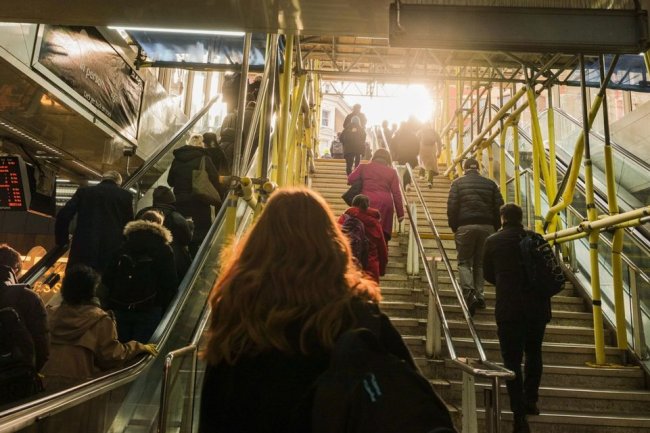Brazil’s Central Bank Cuts Selic to 13.25%
The bank opted for a half-point cut as the country’s inflation outlook improves Five members of the central bank’s Copom monetary policy committee voted for a half-point cut, while the other four voted for a quarter-point cut. Photo: Ton Molina/Zuma Press By Paulo Trevisani and Jeffrey T. Lewis Aug. 2, 2023 7:27 pm ET | WSJ Pro Brazil’s central bank cut its benchmark interest rate by half a percentage point, the first change to the rate in a year, and said it could be the first of a series of cuts meant to substantially reduce one of the world’s highest interest rates. The bank’s monetary policy committee, or Copom, reduced its key Selic rate to 13.25% from 13.75%, after raising it to that level in August 2022.


Five members of the central bank’s Copom monetary policy committee voted for a half-point cut, while the other four voted for a quarter-point cut.
Photo: Ton Molina/Zuma Press
Brazil’s central bank cut its benchmark interest rate by half a percentage point, the first change to the rate in a year, and said it could be the first of a series of cuts meant to substantially reduce one of the world’s highest interest rates.
The bank’s monetary policy committee, or Copom, reduced its key Selic rate to 13.25% from 13.75%, after raising it to that level in August 2022. The move reverses a rate-increase cycle launched in March 2021 when the Selic was at a record low of 2%.
The bank said it considered cutting the Selic by a quarter-point, but chose to make a larger cut because of continuing improvement in the country’s inflation outlook.
“If the scenario evolves as expected, the committee members unanimously anticipate further reductions of the same magnitude in the next meetings, and it judges that this pace is appropriate to keep the necessary contractionary monetary policy for the disinflationary process,” the Central Bank of Brazil said in a statement.
Five members of the Copom voted for the half-point cut, while the other four voted for a quarter-point cut.
The likely start of a rate-cutting cycle comes after the bank’s efforts to slow consumer price increases helped bring the 12-month inflation rate down from an almost 19-year high. In June, the rate stood at 3.16%, down from 12.13% in April 2022, which was the slowest pace for inflation growth since October 2020. Consumer prices declined 0.08% in June from May.
Many economists had been expecting a cut of 25 basis points. But the recent slowdown of inflation appears to have emboldened policy makers, Malcolm Dorson, senior portfolio manager at exchange-traded fund provider Global X, said in a note.
“The more aggressive 50bp move indicates the Copom’s comfort with the economic landscape,” he said. “Given the previous prudence of this group of directors, the 50bp move signals that Brazil is off to the races.”
Even with the larger-than-expected cut Wednesday, the gap between inflation and the Selic rate remains wide and even deeper cuts may be in store, said Gino Olivares, chief economist at Azimut Brasil Wealth Management.
If the central bank trims half a percentage point for the next three meetings, “we will have the Selic at 11.75% at the end of the year, which is still a contractionist level,” Olivares said. “In the future, they will have to evaluate whether to accelerate the pace of easing.”
The central bank began raising the Selic after inflation started to pick up toward the end of 2020 and then rose faster as the Brazil’s economy recovered from the pandemic-induced slowdown. The Russian invasion of Ukraine later pushed inflation even higher as energy and food prices gained amid supply disruptions.
Higher interest rates are now having the expected effect on inflation and the economy, and other factors are also helping calm concerns at the central bank, said Matheus Pizzani, an economist at brokerage CM Capital Markets.
“The more recent evolution of inflation has been closer to what was hoped,” Pizzani said. High rates are helping slow the economy, concerns about the new Brazilian government’s fiscal policies have eased, and the outlook for services inflation is improving, he added.
Inflation expectations in Brazil have come down, as measured by the central bank’s weekly survey of economists, although they remain above the bank’s targets. The bank’s target for this year, for example, is 3.25% and the median forecast of 153 economists in the most recent survey is for consumer prices to rise 4.84% this year.
Some economists say part of the current decline in Brazil’s 12-month inflation readings are temporary, stemming from fuel tax cuts the government applied last year. That effect is likely to dissipate in coming months, leading to a possible uptick in the headline inflation measure even as the economy slows, said CM Capital’s Pizzani.
“Inflation readings will increasingly reflect actual supply and demand imbalances,” he said. He sees inflation bouncing back to 4.8% in December, before falling to 3.8% a year later.
Write to Paulo Trevisani at [email protected] and Jeffrey T. Lewis at [email protected]
What's Your Reaction?













